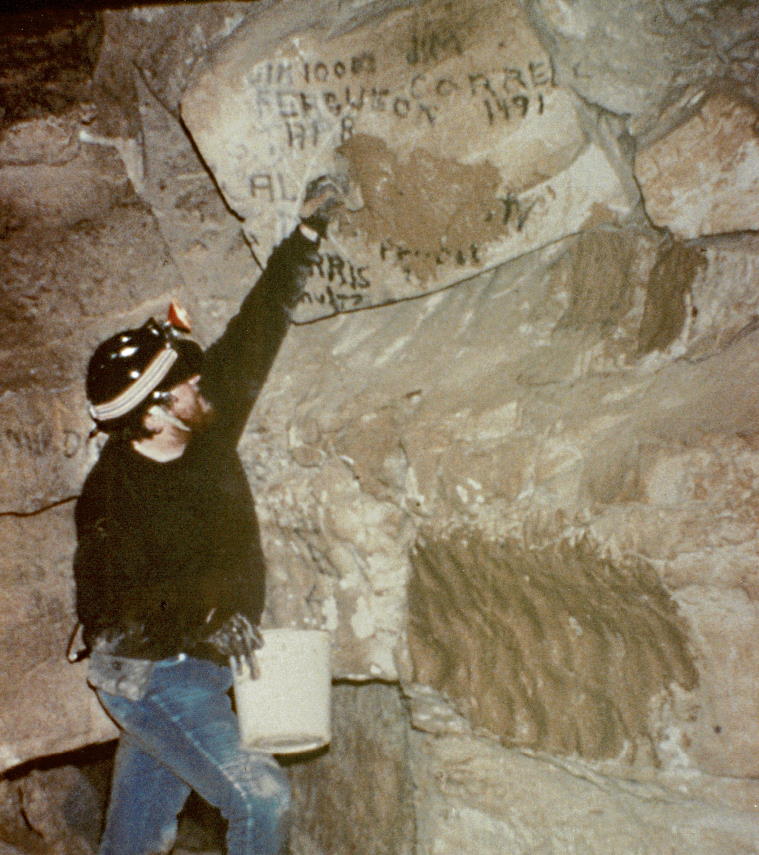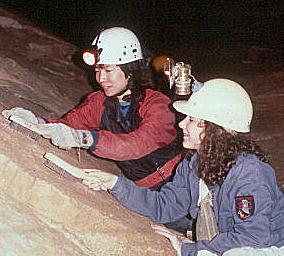Cave Restoration
 When cave damage becomes excessive, the IKC and local grottos may collaborate in an attempt to restore a cave to its original condition.
When cave damage becomes excessive, the IKC and local grottos may collaborate in an attempt to restore a cave to its original condition.
Restoration techniques vary widely. One of the most common approaches, shown in the photo, is brown-washing; in which a mud slurry is applied over the offending paint. When dry, the wall reverts to something approaching its previous appearance. Wire brushes are also occasionally  used to remove the graffiti, but they damage the wall surface and aren't suitable for use on cave formations. Commercial cave owners may use high pressure washers to remove years of mud and grime. Spent carbide, cans, bottles and other trash are collected in canvas and zip-lock bags and removed. Many responsible cavers will routinely pack a trash bag and remove debris on every caving trip. If the pieces can be found, broken speleothems may be repaired using water-resistant epoxy cement -- levers and/or pins hold the pieces in place until the adhesive sets. In time, new calcite is deposited to hide the repair.
used to remove the graffiti, but they damage the wall surface and aren't suitable for use on cave formations. Commercial cave owners may use high pressure washers to remove years of mud and grime. Spent carbide, cans, bottles and other trash are collected in canvas and zip-lock bags and removed. Many responsible cavers will routinely pack a trash bag and remove debris on every caving trip. If the pieces can be found, broken speleothems may be repaired using water-resistant epoxy cement -- levers and/or pins hold the pieces in place until the adhesive sets. In time, new calcite is deposited to hide the repair.
Obviously, the best approach to cave restoration is to avoid damage from the outset.